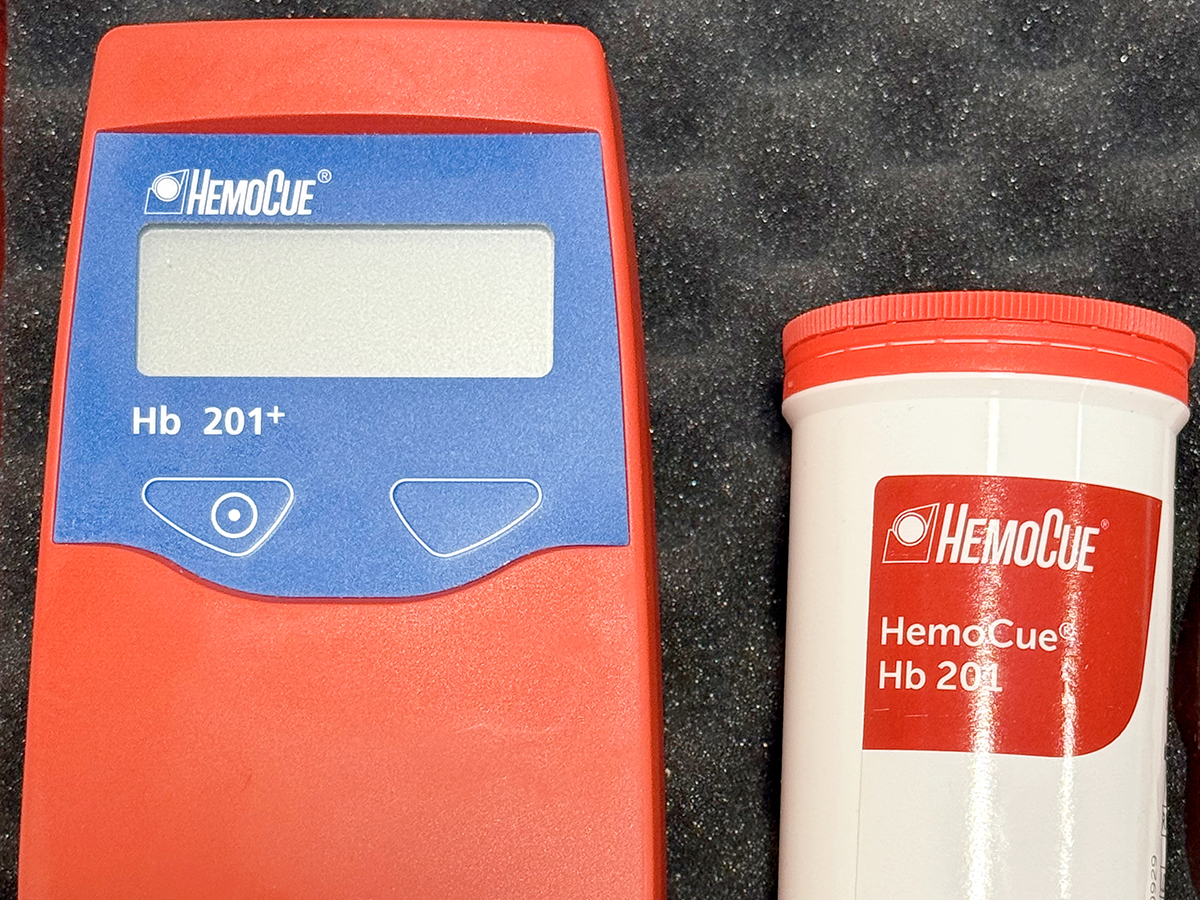Iron is an essential micronutrient involved in many metabolic pathways that ultimately have an impact on immune system function, health and growth.
Piglets are born with low iron stores, and because the sow’s colostrum and milk are also low in iron content, they become iron deficient as they grow.
Iron deficiency will reduce the number of manufactured red blood cells because the low iron limits the hemoglobin molecules available for red blood cell production.
Hemoglobin is the molecule that transports oxygen around the body. Reduced iron leads to reduced hemoglobin and ultimately reduced oxygen circulation available to sustain life.
Read Also

Lending policy still focused on primary producers: Farm Credit Canada
Farm Credit Canada said it has not changed its business practices and remains committed to supporting all producers, after a report from an Ottawa-based media outlet claimed otherwise.
The piglet’s red blood cells, which are present from birth, are not replaced by new ones as they are naturally removed from circulation, leading to anemia.
Another interesting aspect to iron levels is the recent discovery that iron levels at weaning affect the expression of several genes of interest at weaning time, which have a variety of physiologic effects on the pig.
All conventionally raised pigs, which do not have access to dirt outside, receive a 200 milligram injection of iron within the first week of life.
Interestingly, piglets born and raised outside with access to dirt will consume enough iron from the dirt to maintain normal levels of iron and hemoglobin through to weaning.
There are other causes of anemia: excess blood loss, certain viral and bacterial infections and chronic disease. This article will focus on iron deficiency anemia and sub-clinical anemia of piglets.
There has been research directed at understanding the impact of increasing iron supplementation to 400 mg in newborn piglets.
A practical and objective method we have been using to measure the effectiveness of farm iron injection protocols is the HemoCue hemoglobin analyzer.
A drop of blood collected from a small needle prick of the piglet’s ear gives an accurate measure of the hemoglobin levels in blood.
Measured in grams of hemoglobin per litre of blood (g/L), we can understand the average and variation of hemoglobin levels of weaned piglets.
Weaned pigs from one of the farms in our practice, which administered 200 mg of iron to baby piglets, had hemoglobin levels from 82 to 119 g/L, for an average of 103.
Levels below 90 are considered anemic (12.5 per cent), pigs between 90 to 120 are sub-clinically anemic (83.3 per cent) and those higher than 120 (four per cent) had acceptable iron levels.
Therefore, this farm did not have any pigs at weaning time that would be in the normal range of hemoglobin levels.
These findings have a significant impact on the growth potential of these pigs.
A study conducted by Cruz et al determined that for every 10 g/L increase in hemoglobin at weaning, there is a realized increase in average daily gain of 26 grams per day or 3.3 kilograms of weight gain at slaughter.
For the farm previously mentioned, implementing a higher iron dose (400 mg rather than the current 200 mg) and shifting the average hemoglobin level from 103 g/L to 123 g/L could increase the potential average daily gain by 52 grams per day, or 6.6 kg of carcass. At today’s market price, this would mean $10.27 in additional revenue per hog.
One theory behind the improved growth performance is the fact that the higher iron dose upregulates genes affecting sugar and fat metabolism and intestinal health.
Furthermore, other upregulated genes are thought to increase storage of iron in the liver, red blood cell production, reduction of hypoxia and inflammation.
Further research is necessary to draw conclusions on the mechanism of enhanced growth.
Another iron related up-regulated gene affects a piglet’s ability to regulate and maintain core body temperature.
Once weaned, the piglets’ environment changes significantly.
A farrowing crate has additional heat sources such as heat lamps or heat pads, as well as a sow that generates heat. Weaned into a nursery pen, piglets are required to figure out optimal temperature zones within their new space to sleep, rest and play.
A recent study measured the mean body temperature of piglets from 12 hours before weaning to five days after weaning. Piglets receiving the 400 mg iron dose stayed warmer over the course of five days, having a mean body temperature 0.3 C higher than control pigs, which received 200 mg of iron.
Individual pigs losing the most heat after weaning lost comparatively 1 C less body temperature compared to the control group.
While this seems like a small incremental difference, further research will help determine the clinical significance of these findings.
Many farm trials are underway to further assess the impact that 400 mg iron dosing has on pig health and performance.
In my view, the additional 12 cent cost of a second 200 mg iron dose with a potential increase in revenue of $10.27 should have all hog farms taking a look at their iron protocols and piglet hemoglobin levels.
Blaine Tully is a veterinarian and owner of Swine Health Professionals Ltd. in Steinbach, Man.















